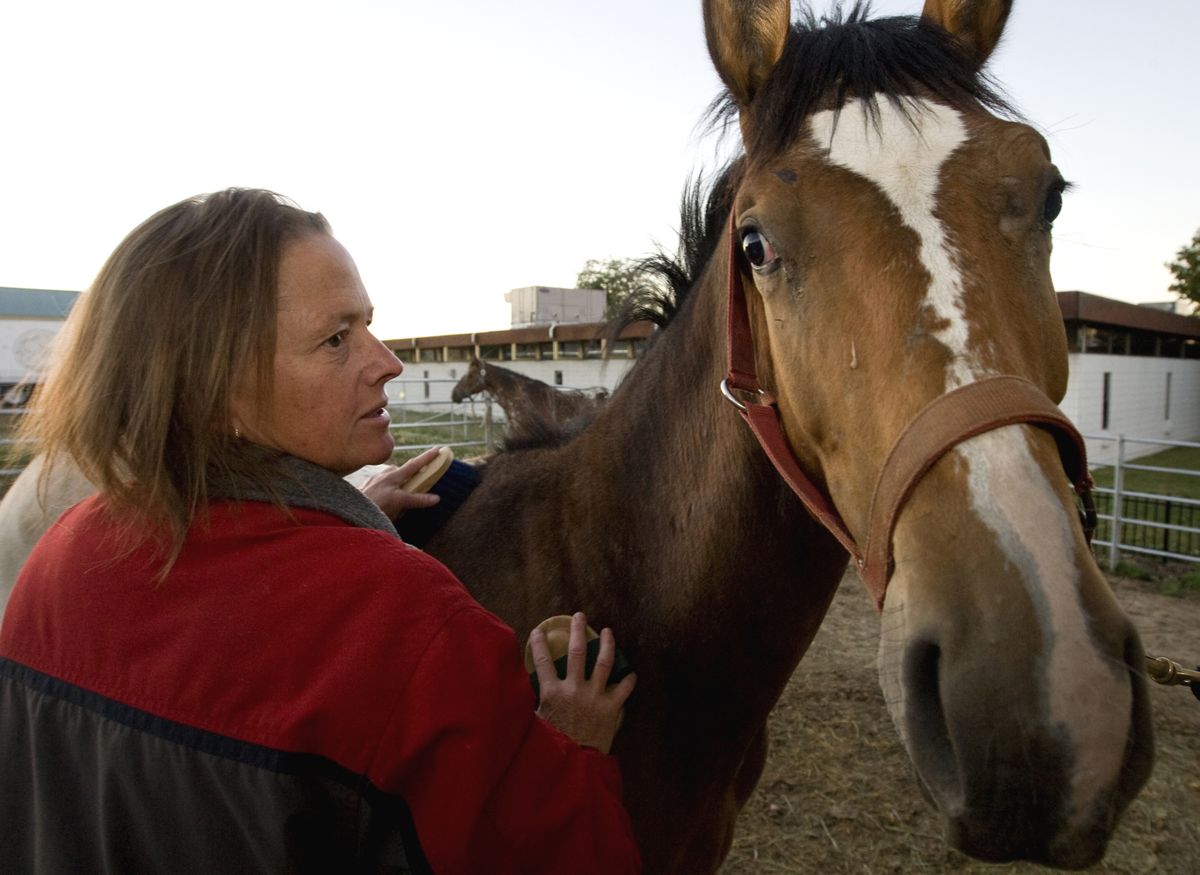Museum highlights role of Appaloosa horse in region’s past

What do John Wayne and Pippi Longstocking have in common? They both rode Appaloosa horses. Pippi’s spotted steed, Lilla Gubben, could walk up stairs and do tricks, and John Wayne rode the stallion Zip Cochise in the Western “El Dorado.”
It’s a versatile breed.
“This is truly a local horse. It was developed here on the Palouse,” said Jennifer Hamilton, director of the Appaloosa Museum. “The Nez Perce Tribe deserves a lot of credit for breeding the foundation for these beautiful spotted horses.”
The Appaloosa Museum in Moscow, Idaho, offers a detailed breed history and a collection of saddles, bridles and other horse gear that’s hundreds of years old. The exhibits also explain the importance of a sound, willing and athletic horse for early settlers. Famous stallions like Red Eagle and Sundance are featured, and one of Jackson Sundown’s prize saddles is on display. Sundown was Nez Perce and the 1911 world champion saddle bronc rider at the Pendleton Round-Up.
“The exhibit is about horses, but it’s also about local history,” Hamilton said.
The Appaloosa – a rugged saddle horse, usually with a white or solid-colored coat with small spots – is a descendant of horses brought to this continent by the Spanish in the 16th century. Spotted horses were already favorites of kings, warriors and nobles, so it was only natural that some of the best were selected for the trip to the New World. It took some time before the horse made its way to the Northwest. The Nez Perce Tribe got its first horses by the mid-1700s and soon became known in the Northwest as exceptional horse breeders and riders.
But the tribe lost almost all its horses during the Nez Perce War of 1877. Some were war casualties, some escaped into the wild and some were confiscated by the U.S. government. The few spotted horses that survived the turmoil were the toughest, but the breed nearly disappeared – until 1938.
“That’s when the registry started. Someone finally said we should start registering these horses, (because) they are a unique part of Palouse history,” Hamilton said.
Claude Thompson, of Moro, Ore., started the Appaloosa Horse Club with about 200 registered horses. Today, more than 635,000 Appaloosas living all over the world are registered in the club. “I’m just grateful that someone saw the value in this horse,” said Hamilton, gesturing at one of the horse paintings at the museum.
Today Appaloosas are used for riding, racing, show jumping and dressage.
“All I know is that people love them,” said Hamilton. “Visitors tell me they are great family horses.”